Planning a trip to Hue, Vietnam, is akin to embarking on an exquisite journey through the past where ancient history meets modern-day living. Nestled along the banks of the Perfume River, Hue is renowned for its stunning imperial architecture, lush landscapes, and vibrant culture. However, before diving into this colorful tapestry, it's crucial to understand the travel costs involved and how to budget wisely for your stay. Whether you're a budget traveler seeking wallet-friendly options or a luxury tourist looking for comfort, Hue offers a wide range of prices that can accommodate various financial situations.
From accommodation to transportation and culinary delights, this guide will break down various factors affecting your travel costs in Hue. By understanding the economic landscape of this charming city, you’ll not only be able to manage your expenses effectively but also maximize the enjoyment of your cultural experience here. Are you ready to explore the ins and outs of budgeting for your Hue adventure? Let’s delve into the various factors that influence travel costs in this historic city.
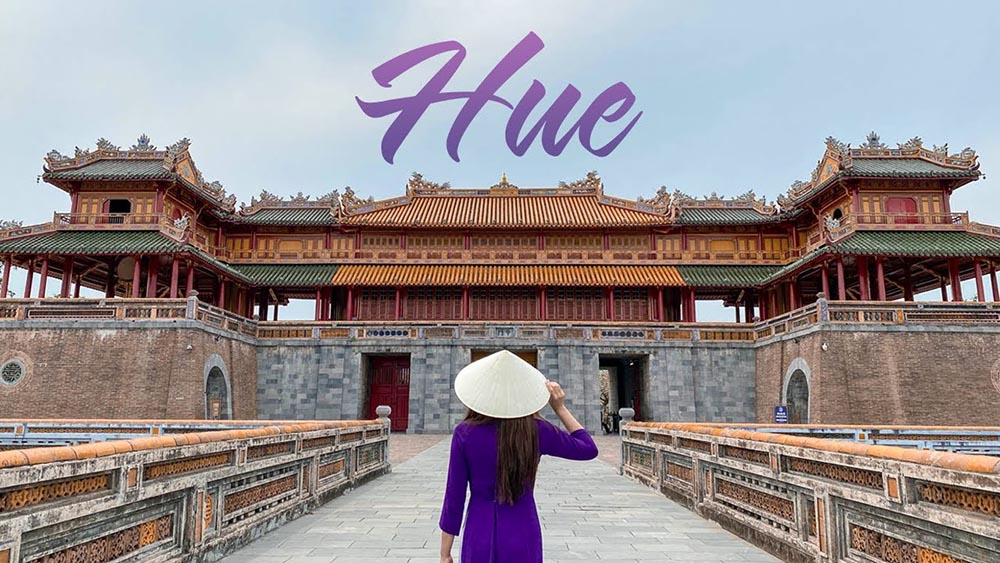
When formulating an effective budget for your trip to Hue, several distinct factors come into play. Understanding these variables will equip you with the knowledge necessary to navigate the intricacies of travel expenses and make informed decisions that align with your financial objectives. One of the most significant of these factors is seasonality. The demand for services and accommodations in Hue fluctuates dramatically depending on the time of year, particularly when comparing peak tourist seasons to off-peak times.
Another vital aspect is accommodation options. The variety of places to stay ranges from budget hostels to luxurious hotels, each with its own pricing strategy that adjusts to seasonal demand. Additionally, transportation costs, which vary between local and tourist rates, accumulate quickly and influence your overall budget. Lastly, economic conditions such as exchange rates and inflation can also impact your purchasing power during your visit.
Awareness of these elements not only aids in budgeting effectively but also enhances the overall experience as you navigate through local attractions and cultural treasures in Hue. Let’s explore these factors in more detail in the following sections.
Understanding seasonal variations in travel expenses is essential for optimizing your budget when visiting Hue. The city's climate plays a significant role in determining the ebb and flow of tourism, affecting everything from accommodation to food prices. Typically, the peak tourist season extends from November to April. During these dry months, the moderate weather attracts a significant influx of visitors, which consequently leads to inflated prices. Hotels and guesthouses often raise their rates, especially during holidays and festive occasions, making it harder for budget travelers to find affordable options.
Conversely, the rainy season from May to October sees a notable dip in tourist numbers. As demand decreases, prices for accommodation, dining, and transportation usually drop, providing an excellent opportunity for cost-conscious travelers. Here's a closer look at how expenses can fluctuate:
| Expense Type | Peak Season (Nov-April) | Off-Peak Season (May-Oct) |
|---|---|---|
| Accommodation | $40 - $100/night | $20 - $60/night |
| Food | $5 - $15/meal | $3 - $10/meal |
| Local Transport | $10 - $20/day | $5 - $15/day |
| Activities & Tours | $20 - $50/day | $10 - $30/day |
In summary, when planning your trip, it’s vital to consider these seasonal price variations. Opting for visits during the off-peak season can significantly reduce your travel costs, allowing you to indulge in the rich offerings of Hue while staying within your budget.
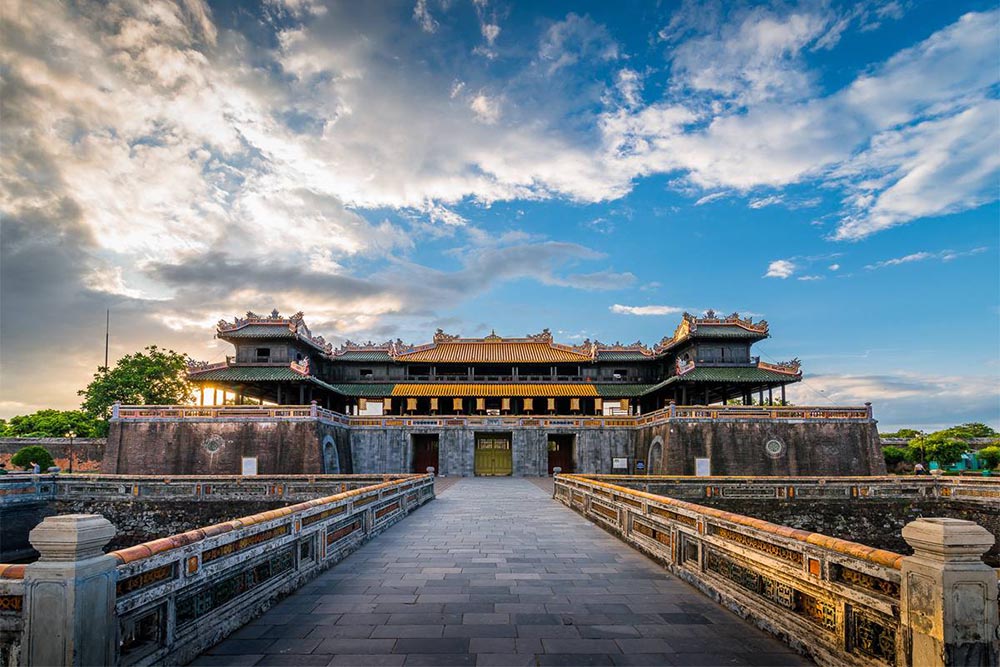
Hue boasts a magnanimous array of accommodation options that cater to various budgets, making it an ideal destination for both luxury seekers and budget travelers. From international hotels to local guesthouses, you can find a place to suit your needs without breaking the bank. Budget travelers can find hostels ranging from $4 to $8 per night, offering shared facilities and a chance to meet fellow wanderers. On the other end of the spectrum, mid-range hotels average $21 to $23 per night, presenting more comfort and amenities.
Interestingly, Hue is often recognized for having some of the lowest hotel rates in Asia. An essential consideration is the dynamic pricing strategy employed by many accommodations during the tourist season, leading to substantial price hikes. To ***ter illustrate this, consider the following list of accommodation types and their average costs:
Choosing to stay slightly outside the city center can also yield ***ter deals while still providing convenient access to popular attractions. Many travelers have successfully managed their budgets by being strategic about their accommodation choices. For instance, booking stays during weekdays often leads to lower prices compared to weekends, emphasizing the importance of timing in travel planning.
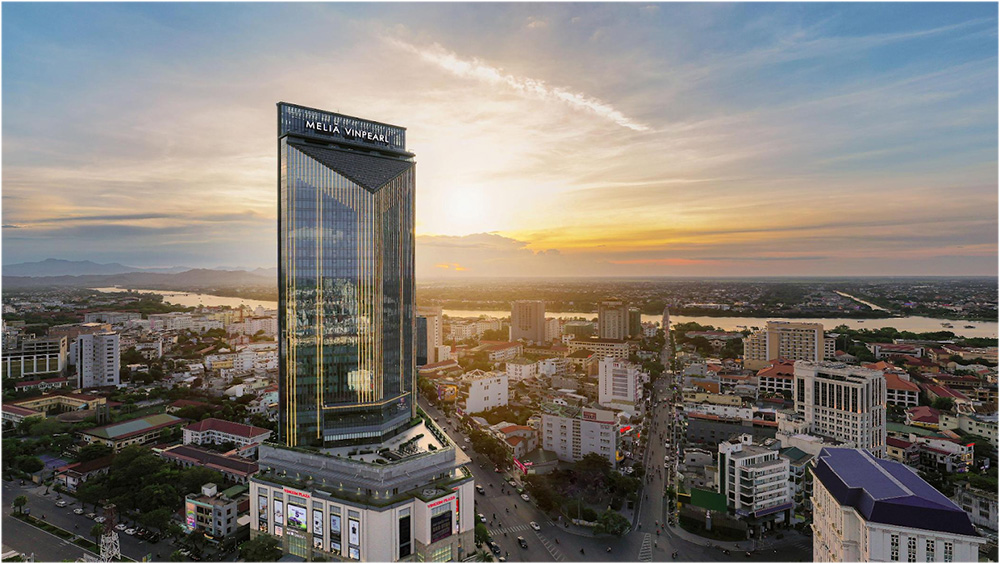
Transportation is another pivotal component of budgeting for your journey in Hue. Visitors have several options at their disposal, ranging from public buses to taxis and motorbike rentals. The average local transportation cost fluctuates based on the mode of travel chosen. For instance, using local public buses generally costs around 5,000 VND per trip (roughly $0.22), which is a monumental savings compared to the higher rates charged by taxis or tourist shuttles.
When considering private transportation, the price can skyrocket unexpectedly, often exceeding $10 to $15 for short distances. On the other hand, renting a scooter comes at around $7 per day, providing both flexibility and accessibility to explore hidden gems within and surrounding the city. A summary of transportation options and their estimated costs is provided below:
| Transport Type | Estimated Cost |
|---|---|
| Local Bus | $0.22 (5,000 VND) |
| Taxi/Ride-Sharing | $5 - $15 |
| Motorbike Rental | $7 per day |
| Bicycle Rental | $3 - $5 per day |
Exploring local transportation options can be a thrilling and cost-effective way to engage with Hue’s vibrant culture. It's essential to negotiate taxi fares ahead of time or utilize apps to avoid inflated costs that often accompany tourist traffic. Implementing these strategies not only helps in budgeting but also immerses travelers into the local experience.
Now that you have a grasp on the various factors influencing travel costs in Hue, it’s time to explore effective budgeting strategies to maximize your experience without overspending. A well-structured budget can help you navigate the financial complexities of travel while ensuring that you don’t miss out on the unique offerings Hue has to offer. One effective method is to categorize your expenses into distinct categories such as accommodation, food, transportation, and activities.
Creating a daily budget based on these categories can provide clarity and help you manage your overall spending effectively. For example, budgeting approximately $30 to $50 per day for budget travelers is feasible, while mid-range travelers might allocate $70 to $100 daily. This segmentation empowers you to prioritize spending on what matters most during your trip, be it cultural experiences, culinary delights, or relaxation.
In the following sections, we’ll create a more detailed daily budget outline for travelers to Hue, further elaborating on strategies that can aid in maintaining financial balance while exploring this beautiful city.
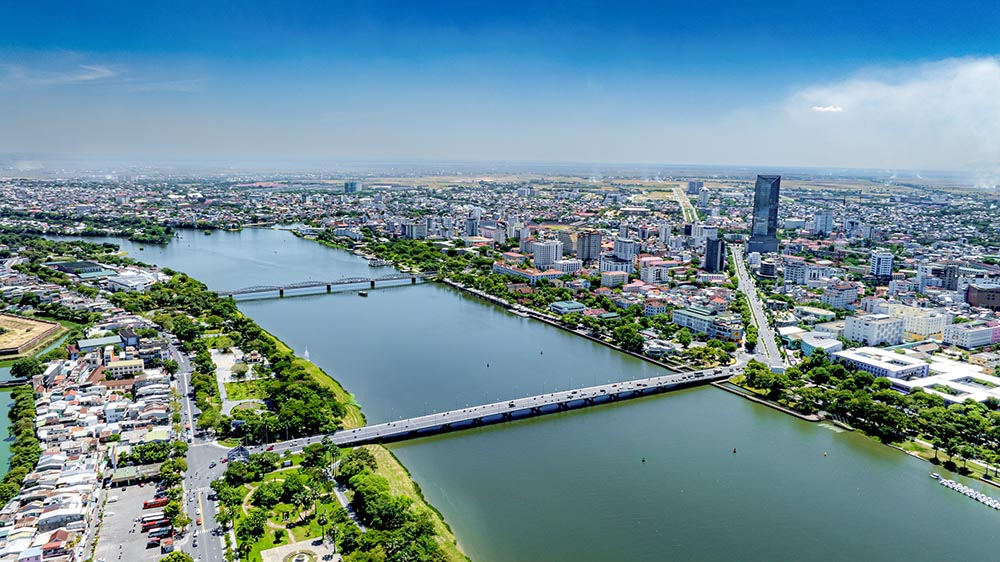
Establishing a compact daily budget outline will undoubtedly facilitate a more enjoyable travel experience in Hue. Below is a proposed budget framework catering to various types of travelers to help strategize ***ter.
Accommodation: Budget accommodations like hostels or guesthouses range from $5 to $15 per night, while mid-range hotels cost between $20 to $40 per night. Luxurious options start at around $60.
Food: Hue's street food scene is famous for its affordability and variety. A meal can cost as little as $1 to $3 in local eateries, with a more substantial meal in restaurants potentially costing around $3 to $10.
Transportation: Local travel can be done affordably via public buses at around $1–$5 per trip or renting a motorbike for about $7 per day. Taxi or ride-sharing services typically cost under $5 for shorter distances.
Activities: Entrance fees for attractions such as the Imperial City are approximately $5, while guided tours might range from $10 to $50. Budget about $20 daily for activities covering popular attractions and experiences.
Miscellaneous: Set aside around $5 to $10 for snacks and souvenirs.
| Expense Category | Estimated Daily Cost |
|---|---|
| Accommodation | $10 - $60 |
| Food | $5 - $15 |
| Transportation | $5 - $15 |
| Activities | $20 |
| Miscellaneous | $5 - $10 |
| Total Daily Budget | $30 - $100 |
This outline visualizes how a traveler can expect to spend between $30 to $100 per day in Hue based on different travel styles. Such structured budgeting promotes economic travel and ensures you can enjoy the rich heritage of Hue without unexpectedly exceeding your financing limits.
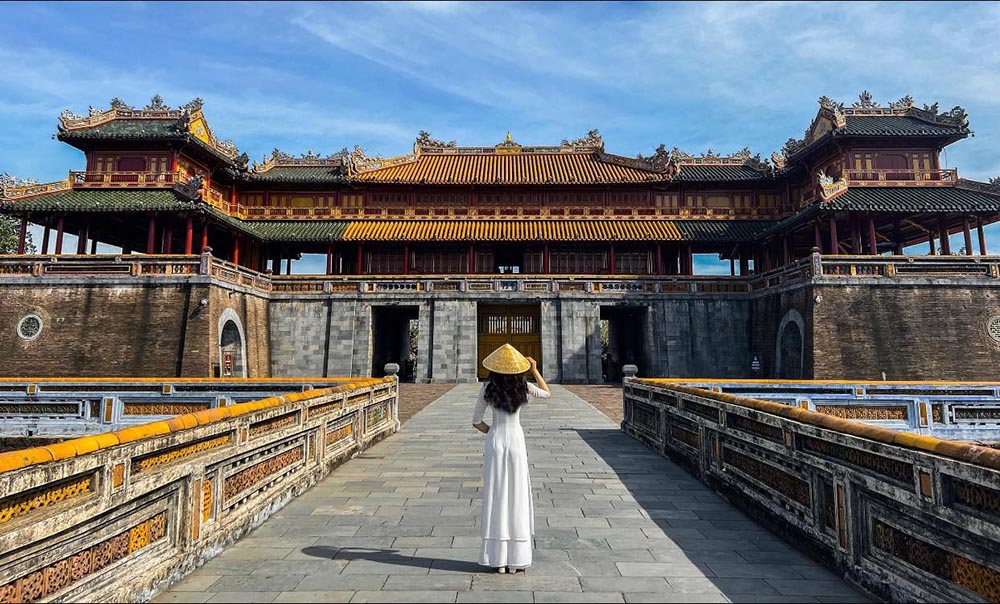
When traversing the culinary landscape and accommodation scene in Hue, incorporating cost-saving techniques can allow travelers to manage their budgets effectively while still experiencing the city's charm. One fundamental strategy for easing lodging costs is utilizing comparison booking websites that tout ***ter deals on hotels, hostels, and vacation rentals. This method empowers travelers to identify the best pricing based on their travel dates.
Choosing to stay slightly outside the bustling city center can also yield significantly lower rates while maintaining access to major attractions. Traveling to Hue during the off-peak season or shifting lodging dates to weekdays can drastically affect accommodation expenses, helping you keep money in your pocket.
Regarding food, seeking out local markets and street food stalls often provides a delightful feast at a fraction of the cost of tourist-oriented restaurants. Sample local dishes like Bun Bo Hue at small eateries that offer affordable, authentic meals. If your accommodation supports self-catering, creatively exploring local markets to prepare meals can also cut costs significantly.
Here’s a brief list of tips to help you save on accommodation and food:
By employing these strategies, you can navigate Hue without feeling financially strained, leading to a more enriching travel experience.
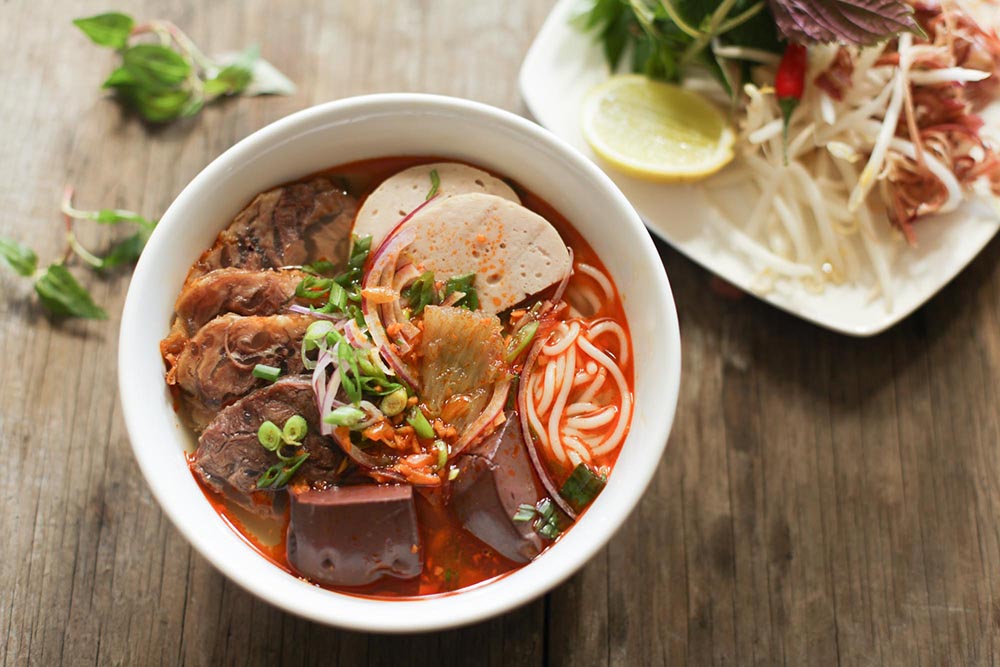
Using public transportation is one of the most effective ways to mitigate travel expenses in Hue. The city's public transport system is both economical and accessible, allowing travelers to explore a myriad of attractions while keeping expenditures low. For example, the costs associated with public bus rides are exceedingly affordable at around 5,000 VND per trip, making it a profitable avenue to traverse the city.
Motorbike rentals contribute significantly to the exploration of Hue while remaining budget-friendly. For the average cost of $7 per day, you gain the freedom to visit important cultural sites at your own pace while enhancing your local experience on two wheels. However, it’s wise to secure the rental from reputable vendors to avoid any overcharging.
Walking is another efficient solution, especially given Hue’s compact size and many attractions being in close proximity to one another. Whether meandering along the Perfume River or wandering through ancient streets, walking allows for immersion in the local culture. Below, you’ll find a cost breakdown of transportation options in Hue:
| Transport Type | Cost |
|---|---|
| Public Bus | $0.22 (5,000 VND) |
| Motorbike Rental | $7 per day |
| Bicycle Rental | $3 - $5 per day |
| Walking | Free |
In summary, harnessing public transportation not only provides an economical route around Hue but also encourages deeper connections with the locale. By opting for more grounded travel methods, you’ll enjoy authentic cultural experiences while minimizing travel budget burdens.
Hue's cost of living and travel expenses can be perceptibly lower compared to other popular Vietnamese cities such as Ho Chi Minh City and Hanoi. When eying Hue's budgeting strategies against these urban giants, travelers will find that financial planning here can amplify enjoyment without the stress of overspending. For instance, the average daily cost for a traveler in Hue sits around $60, encompassing accommodation, food, transportation, and entertainment. This is notably lower when compared to Ho Chi Minh City, where the average daily expenditure is approximately $83.
Examining accommodation highlights a defining difference. The average hotel room cost in Hue hovers around $43, which is among the top affordable locations in Asia. In contrast, attractions in cities like Hanoi or Ho Chi Minh often see average hotel prices exceeding $60 per night. With dining out in Hue also more economical, a meal at a local eatery can cost as low as $1 to $3, compared to $5 to $10 in the capital.
In summary, while food and accommodation prices represent significant savings in Hue, transportation remains a similarly cost-effective option, encouraging budget-conscious travelers to relish their time discovering historical landmarks and cultural sites.
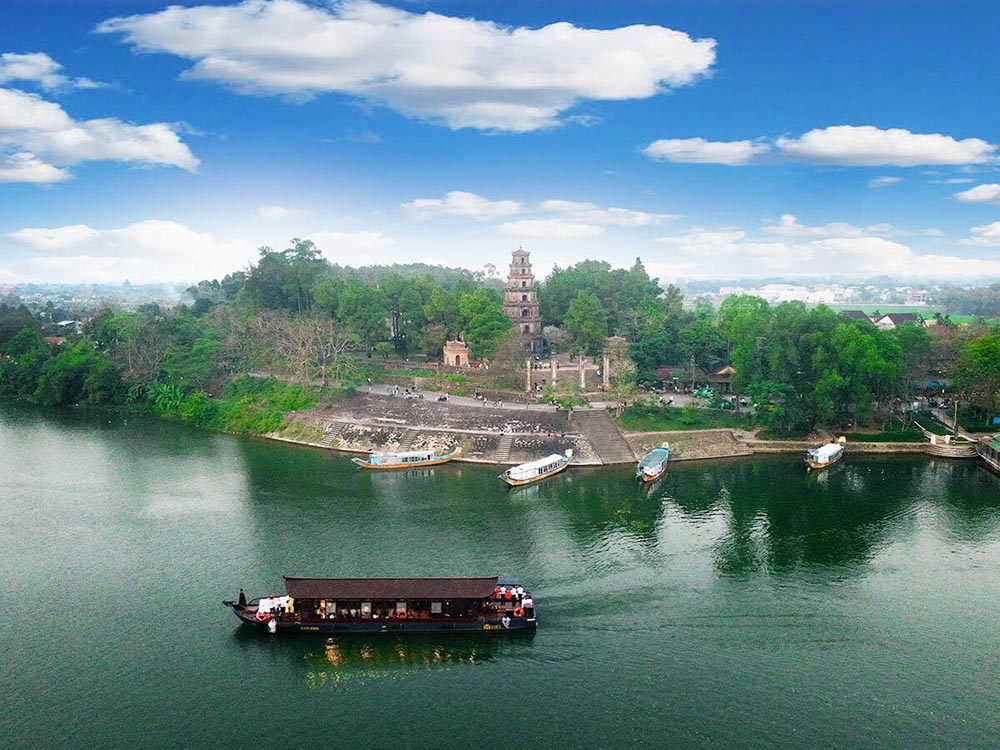
In the realm of accommodation, Hue exhibits a dramatic contrast when stacked against other significant Vietnamese metropolises, making it particularly appealing for cost-conscious tourists. For instance, the average accommodation price in Hue falls around $43 per night, a figure that positions it favorably against both Ho Chi Minh City and Hanoi, where rates can soar to $60 or more.
The diversity of Hue’s accommodation choices is remarkable, ranging from budget hostels to more upscale hotels. This variety empowers travelers to select options that align best with their financial objectives while still enjoying comfort. Luxury hotels in Hue start at about $60, significantly lower than their counterparts in larger cities, where such accommodations would typically demand close to $100 or higher.
Consider the following table on average accommodation costs in different cities:
| City | Average Cost per Night |
|---|---|
| Hue | $43 |
| Ho Chi Minh City | $100+ |
| Hanoi | $60+ |
| Da Nang | $60 |
This analytical approach to accommodation prices sheds light on why Hue stands out as an attractive destination for budget travelers seeking comfort without exorbitant hikes typical in bigger cities. Strategizing your accommodation effectively will leave room for unique experiences around the city without worrying about ludicrous expenses.
The culinary scene in Hue presents an opportunity for travelers to indulge in authentic Vietnamese cuisine at significantly lower prices than in other tourist hotspots. Hue is distinguished for its royal cuisine, which features beautifully plated dishes that resonate with the region's rich imperial history. On average, dining out in Hue will cost around $49 per person per day, slightly pricier than nearby Da Nang, which sees an average of $47.
In contrast with larger cities such as Ho Chi Minh City and Hanoi, where dining costs for similar dishes can reach between $5 to $10, Hue offers local eateries and street food stalls where one can savor delectable meals for as little as $1 to $3. Highlighting the affordability of its dining experience, here’s a comparison table for meal costs:
| City | Average Meal Price |
|---|---|
| Hue | $1 - $3 |
| Ho Chi Minh City | $5 - $10 |
| Hanoi | $5 - $10 |
| Da Nang | $3 - $7 |
While Hue excels in its focus on cuisine, it’s essential to note that the differences may arise based on preparation methods and ingredient costs. For curious foodies, Hue remains a bastion of delightful yet economically viable culinary options. Indulging in local delicacies like Bun Bo Hue or Banh Khoai truly reflects the local culture and accentuates the budget-friendly nature of dining here.
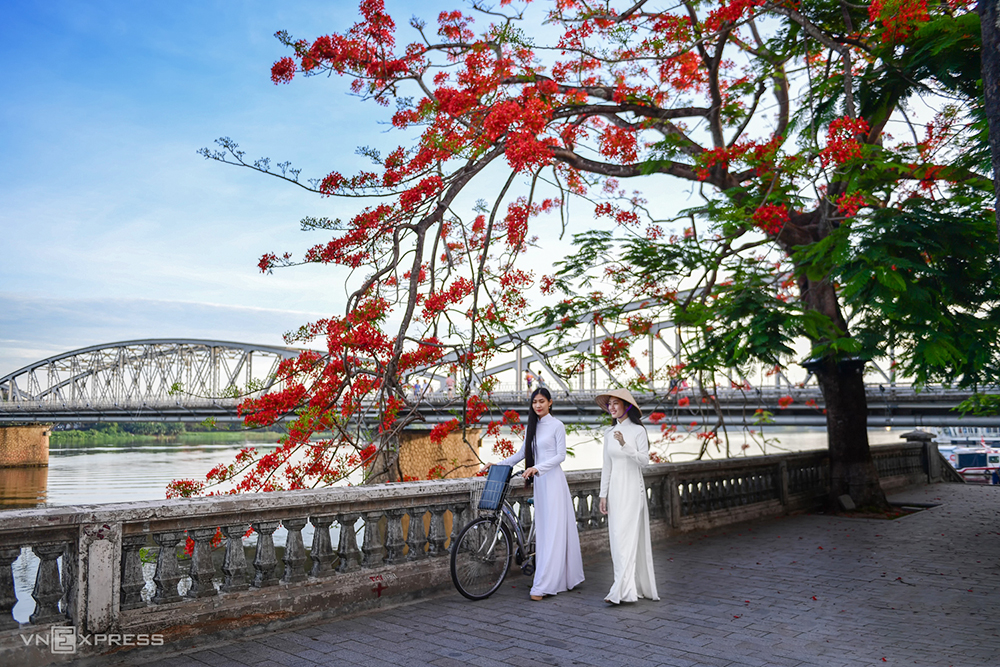
Examining transportation costs provides further insight into how Hue’s affordability stands in contrast to other well-known Vietnamese destinations like Da Nang and Hoi An. The ease of navigating Hue on foot is notably higher, earning it a ***ter walkability rating compared to Da Nang, which is spread out more significantly, causing many visitors to rely on taxi or motorbike rentals to reach their desired sites.
In contrast, Hue shares a reputation for having cost-effective transportation options. For instance, public buses are available at meager costs, averaging around 5,000 VND per ride, making them a preferable option for budget-conscious travelers. Here’s a comparative summary of basic transportation costs:
| City | Public Transport Cost | Taxi Cost (Short Distance) |
|---|---|---|
| Hue | $0.22 (5,000 VND) | $5 – $10 |
| Da Nang | $1 - $5 | $10 – $15 |
| Hoi An | $1 - $3 | $7 – $12 |
Despite some dimensional shifts in overall costs, Hue showcases the best blend of walkability and reasonably priced transportation, making it a favored choice for cost-savvy travelers. This factor greatly enhances its appeal, allowing individuals to explore its rich cultural and historical tapestry without overspending on transit.
As previously analyzed, comparing travel costs in Hue with those of other popular destinations underscores the importance of understanding what additional costs might arise during your trip. Whether it’s varying charges for entrance fees to attractions or unique experiences found throughout the city, these elements could cumulatively impact your travel budget if not accounted for upfront.
Additional expenditures encompassing entrance fees, guided tours, and even some unforeseen costs in restaurants could potentially catch travelers off guard. Budgeting accordingly can prevent any startling surprises, allowing you to enjoy Hue’s rich historical and cultural offerings comfortably.
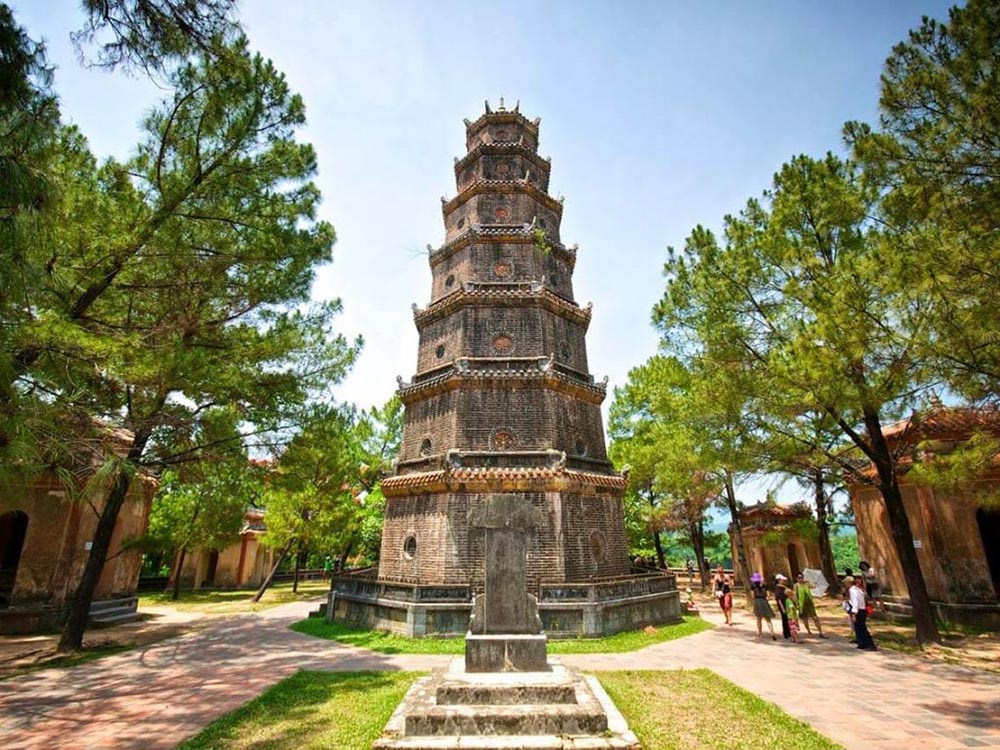
When traveling in Hue, budgeting for entrance fees to its many historical and cultural sites is paramount for a realistic view of overall expenses. Entry fees to notable attractions differ, but they are generally reasonable and won't pinch the purse too sharply.
For example, the entrance fee for the Hue Imperial City Citadel is approximately 200,000 VND (about $8.7), making it an accessible and culturally rich experience. The royal tombs, such as Khai Dinh Tomb and Tu Duc Tomb, charge around 150,000 VND (can be about $6.5) each, while Thien Mu Pagoda welcomes visitors for free, though your generosity in donations can support its maintenance. Here’s a detailed overview of some entrance fees for major sites:
| Attraction | Entrance Fee (VND) | Approx. Cost (USD) |
|---|---|---|
| Hue Imperial City Citadel | 200,000 VND | $8.7 |
| Khai Dinh Tomb | 150,000 VND | $6.5 |
| Tu Duc Tomb | 150,000 VND | $6.5 |
| Thien Mu Pagoda | Free (donations welcomed) | Free |
| Combo ticket (4 sites) | 530,000 VND | $23.2 |
In establishing a budget for these excursions, planning for an overall budget of around 200,000 to 530,000 VND will capably cover your costs for various attractions while you delve into the cultural riches that Hue provides. Expecting these fees as part of your travel cost will ensure your budget remains intact while experiencing the enthralling sites around you.
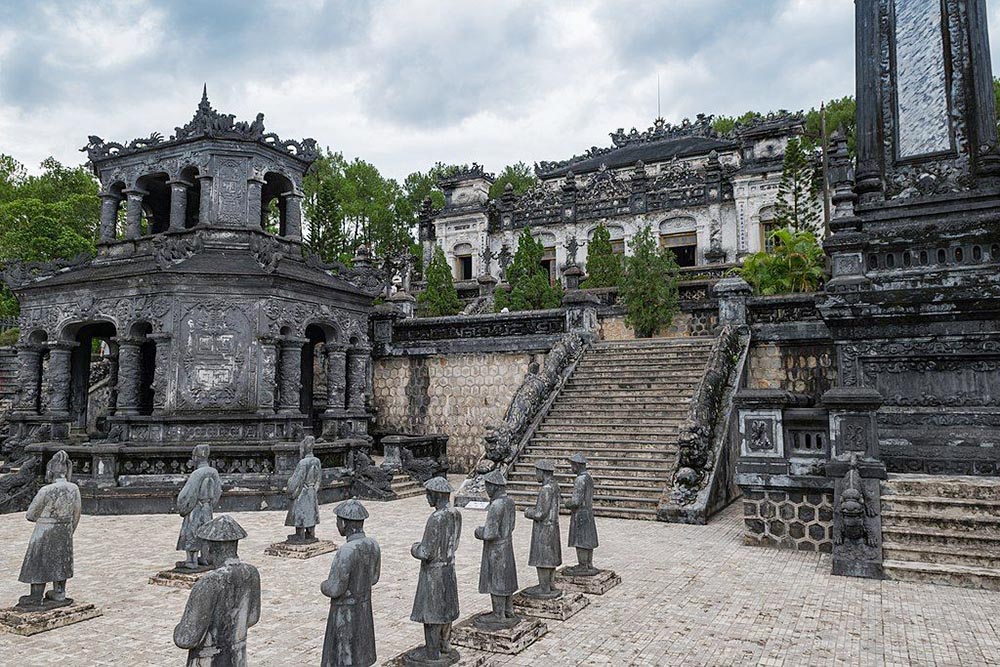
When traversing Hue, budgeting for local experiences and guided tours can greatly enrich your travel experience, while also remaining quite affordable. Many locals host walking tours, which may adopt a “tip-based” structure, allowing for budget-friendly excursions to discover the city’s hidden gems and historical landmarks. The opportunity to connect with locals not only fosters a sense of community but also provides insights that can lead to deeper cultural appreciation.
Besides guided walking tours, engaging in broader cultural experiences often comes attached to nominal fees. Entrance fees for significant locations, such as the Imperial City or the various pagodas in Hue, hover around 120,000 to 150,000 VND (approximately $5 to $6). These costs are remarkably reasonable for the experiences they provide, leading to extensive knowledge about the city’s historical significance.
For budgeting purposes, consider allocating around $10 to $30 USD daily for local experiences, enriching yourself with delightful meals, local transport, and entrance fees while sampling a variety of affordable local dishes such as Bun Bo Hue and Banh Khoai.
| Experience Type | Estimated Cost (USD) |
|---|---|
| Local Walking Tour (Tip-based) | $5 - $10 |
| Entrance Fees per Site | $5 - $6 |
| Daily Local Experiences Budget | $10 - $30 |
With strategic planning and prioritization, you can enjoy a plethora of immersive experiences that encapsulate the essence of Hue while easily managing your budget.
As you navigate through the charming spaces and markets in Hue, a highly anticipated aspect of each trip revolves around souvenir shopping. Being mindful of price points and understanding what's reasonable to expect can effectively keep your budget on track. Markets like Dong Ba Market offer a variety of local handicrafts, textiles, and traditional accessories at relatively low prices.
While it’s delightful to browse souvenirs, setting a budget can help keep your spending from spiraling out of control. Expect to budget around 20,000 to 50,000 VND (approximately $1 to $2) for smaller items, such as conical hats or wooden carvings. More elaborate pieces, like ceramics from specialized shops such as Bleu de Hue, may range between 200,000 to 500,000 VND (around $9 to $22 USD).
Here’s a brief cost breakdown to give you a clearer idea:
| Souvenir Type | Price Range (VND) | Approx. Price (USD) |
|---|---|---|
| Small handcrafted items | 20,000 - 50,000 | $1 - $2 |
| Moderate ceramics | 200,000 - 500,000 | $9 - $22 |
By recognizing potential expenses and preparing your budget accordingly, you can enjoy the pleasure of shopping while resisting the urge to overspend. Collecting memories through souvenirs can prove to enrich your travel experience, leaving visitors with tangible reminders of their time spent in the enchanting city of Hue.
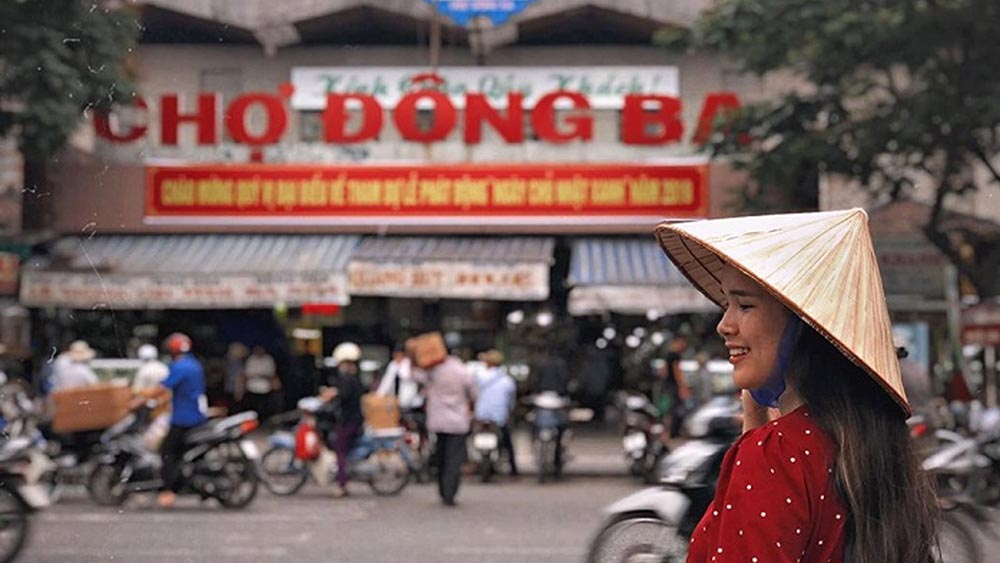
What is the best time to visit Hue for budget travelers?
Can I find vegetarian food easily in Hue?
Is public transportation safe in Hue?
Are entrance fees to attractions reasonable in Hue?
Where can I find the cheapest accommodation in Hue?
Overall, navigating the travel costs and budgeting effectively for your trip to Hue, Vietnam, provides a unique opportunity to experience the rich tapestry of culture and history within this enchanting city. By understanding the various factors influencing these costs such as seasonal variations, diverse accommodation options, and transportation methods you can make informed decisions that significantly enhance your visit.
Adopting solid budgeting strategies will enable you to relish the culinary delights, immerse yourself in local experiences, and explore historical sites without overwhelming your finances. Hue stands out as a destination that successfully balances cost-effectiveness with cultural richness, making it ideal for travelers looking to enjoy a fulfilling and memorable Vietnamese experience. By leveraging the insights provided, you’ll maximize your time in Hue, ensuring your journey is both delightful and financially manageable. Happy travels!